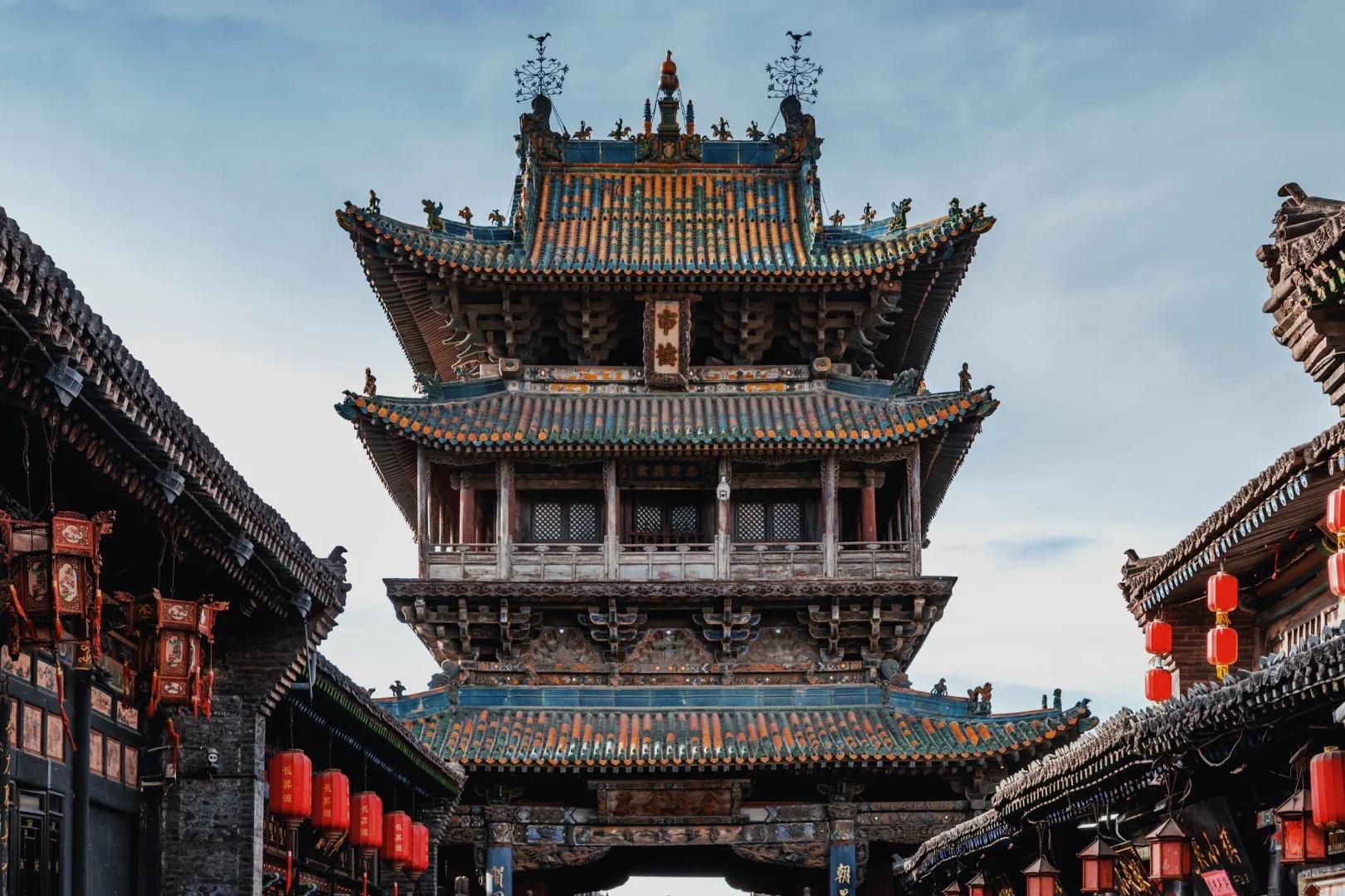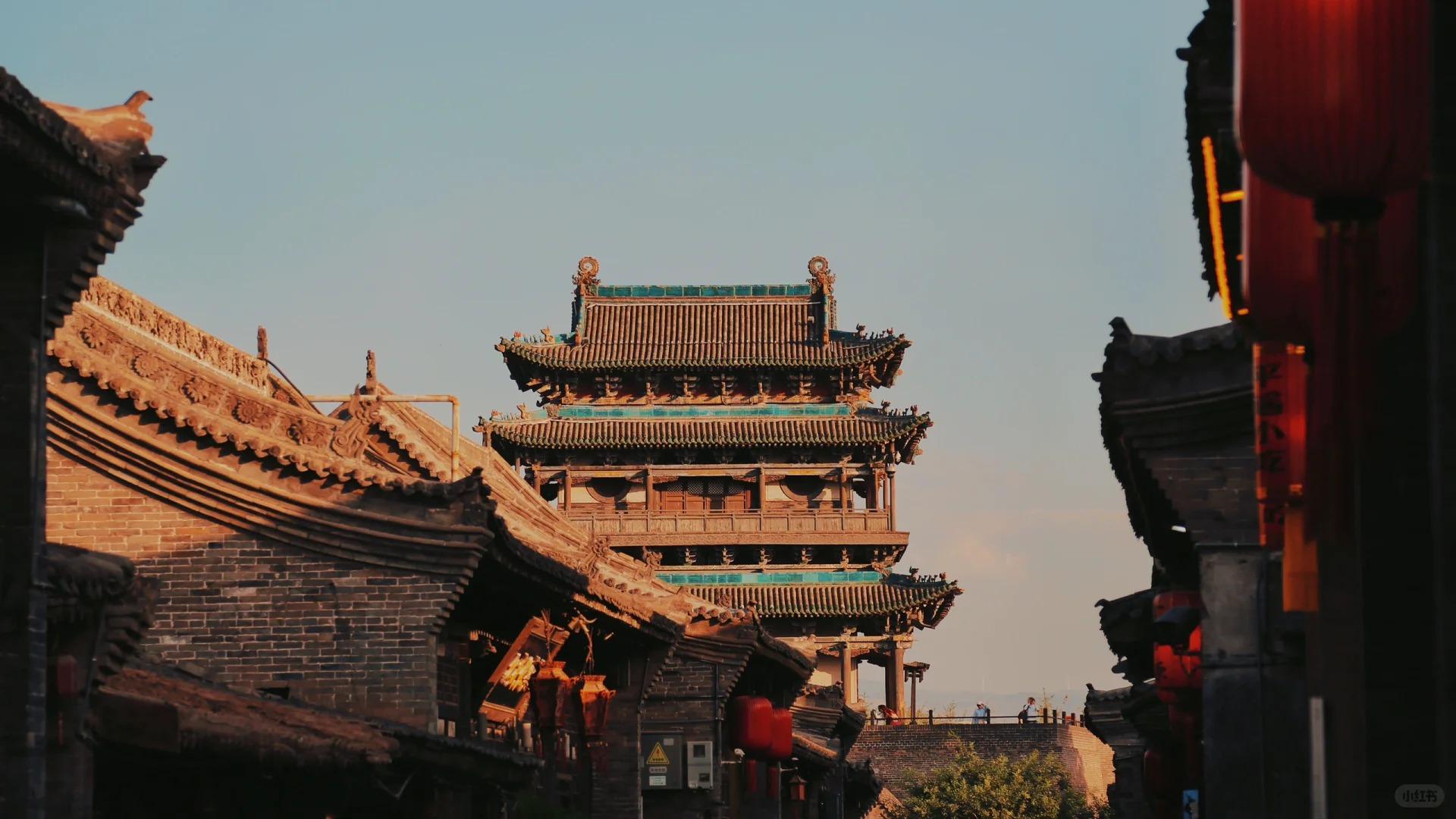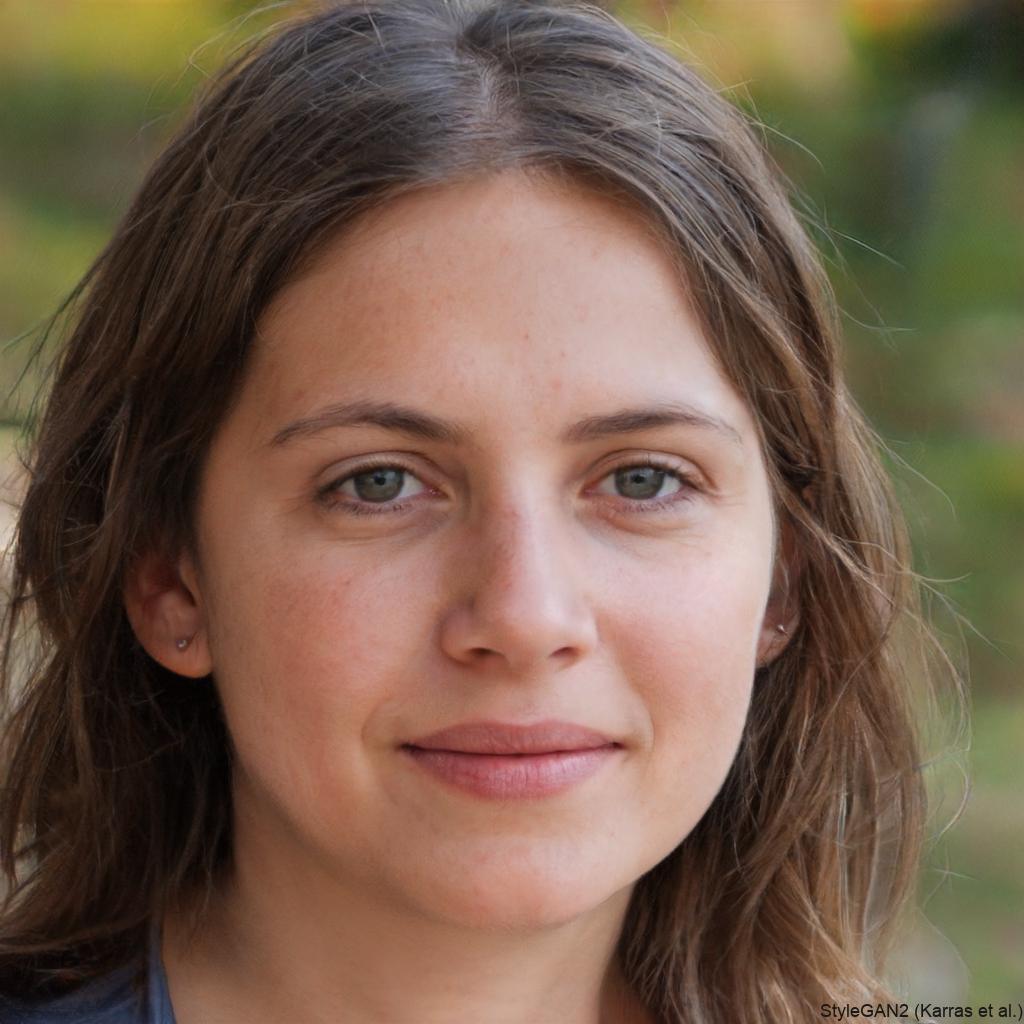Visiting Information
| Information | Details |
|---|---|
| Chinese Name | 平遥古城 (Píngyáo Gǔchéng) |
| Location and Address | Pingyao County, Jinzhong City, Shanxi Province, China |
| Opening Time/Hours | 08:00 – 19:30 (April to October) 08:30 – 17:30 (November to March) |
| Entrance Fee | CNY 165 (includes access to most attractions within the city) |
| How to Get There | By Train: Take a train to Pingyao Ancient City Station By Bus: Take a bus from Taiyuan or other nearby cities to Pingyao Bus Station By Taxi: Available from Pingyao train station or bus station to the ancient city |
| Best Time for Visit | September to October (comfortable weather and scenery) |
| Contact Info | Phone: +86 354 568 5376 Email: pingyaotourism@163.com |
Overview
Pingyao Ancient City, located in Shanxi Province, China, is one of the best-preserved ancient walled cities in the country. Founded in the 14th century, it serves as an exceptional example of a traditional Han Chinese city from the Ming and Qing dynasties. Recognized as a UNESCO World Heritage Site in 1997, Pingyao is renowned for its intact city walls, traditional architecture, and rich cultural heritage. The city played a significant role in Chinese financial history and offers visitors a unique glimpse into China’s past.
Historical Background
Pingyao’s history dates back over 2,700 years, with the current layout established during the reign of Emperor Hongwu of the Ming Dynasty in 1370. The city reached its peak during the Qing Dynasty, becoming a prominent financial center and home to China’s first banks. Pingyao’s Rishengchang Exchange Shop, established in 1823, is considered the first draft bank in China’s history. The city’s economic importance declined in the early 20th century with the fall of the Qing Dynasty and the rise of modern banking systems. However, this decline inadvertently preserved much of the city’s ancient architecture and layout, making it a valuable historical site today.
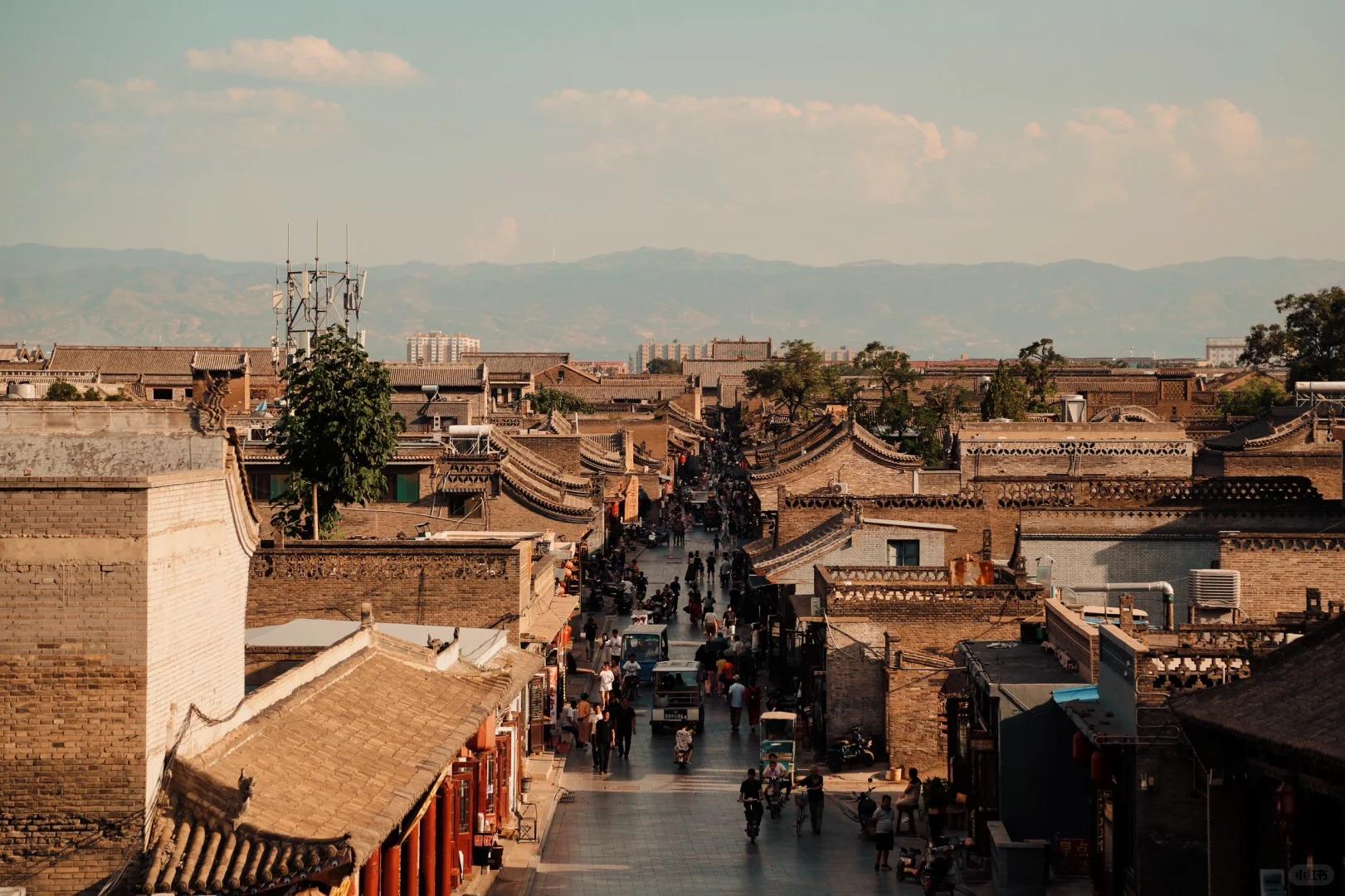
Architectural Features
- City Walls: The most prominent feature of Pingyao is its impressive city wall, which forms a rectangular shape around the old town. Built during the Ming Dynasty, the wall stretches for about 6 kilometers, stands 12 meters high, and is 3-6 meters thick. It features six gates, one each on the east and west sides and two each on the north and south sides. The wall is punctuated by 72 watchtowers, symbolizing the 72 disciples of Confucius. These well-preserved fortifications offer visitors a chance to walk along the top of the wall and enjoy panoramic views of the ancient city.
- Traditional Courtyard Houses: Pingyao is famous for its traditional Shanxi-style courtyard houses, known as “siheyuan.” These residences typically feature a central courtyard surrounded by rooms on all four sides. The houses are characterized by their grey brick walls, wooden lattice windows, and elegant roof eaves. Many of these courtyard houses have been converted into guesthouses or museums, allowing visitors to experience the traditional lifestyle of Pingyao’s residents. Notable examples include the Qiao Family Compound and the Wang Family Compound, both located near Pingyao.
- Ancient Government Buildings: The city contains several well-preserved government buildings from the Ming and Qing dynasties. The most significant is the Pingyao County Government Office, also known as the Yamen. This complex showcases the typical layout of ancient Chinese administrative buildings, including courtrooms, offices, and residential quarters for officials. The Confucian Temple, another important government-related structure, reflects the significance of Confucian teachings in ancient Chinese governance and education.
- Historical Financial Institutions: As a former financial center, Pingyao boasts several important historical banks and pawnshops. The most famous is the Rishengchang Exchange Shop, considered China’s first bank. Its well-preserved buildings offer insight into the operations of early Chinese financial institutions. Other notable sites include the Weitaihou Bank and various pawnshops, which showcase the architectural style of ancient Chinese commercial buildings and provide a glimpse into the city’s economic history.
Cultural Importance
Pingyao Ancient City holds immense cultural importance as a living museum of Chinese urban history and traditional culture. It represents one of the most complete examples of a traditional Han Chinese city from the Ming and Qing dynasties, offering invaluable insights into ancient Chinese urban planning, architecture, and daily life. The city’s well-preserved financial institutions, including the first draft bank in China, highlight its significant role in the development of Chinese commerce and banking systems. Pingyao also serves as a repository of traditional crafts, particularly in lacquerware and hand-made shoes, helping to preserve these ancient skills. The city’s cultural landscape, combining residential, commercial, religious, and administrative buildings, provides a comprehensive view of traditional Chinese society. As a UNESCO World Heritage Site, Pingyao plays a crucial role in cultural heritage preservation and education, attracting scholars, tourists, and history enthusiasts from around the world. Its annual Pingyao International Photography Festival further enhances its cultural significance by blending historical heritage with contemporary art.
Surrounding Attractions
- Shuanglin Temple: Located about 6 kilometers southwest of Pingyao Ancient City, Shuanglin Temple is a Buddhist monastery famous for its collection of more than 2,000 colored clay statues. Dating back to the Northern Wei Dynasty (386-534 AD), the temple is often referred to as the “Museum of Colored Sculpture” due to its extensive collection of well-preserved statues from the Song, Yuan, Ming, and Qing dynasties. The intricate details and vibrant colors of these sculptures offer visitors a unique glimpse into the evolution of Chinese Buddhist art over the centuries. The temple complex itself, with its traditional architecture and tranquil atmosphere, provides a stark contrast to the bustling streets of Pingyao.
- Wang Family Compound: Situated about 35 kilometers from Pingyao, the Wang Family Compound is one of the largest private residences in China. Built during the Qing Dynasty, this massive complex covers an area of 250,000 square meters and consists of 231 courtyards with over 2,000 rooms. The compound showcases the opulent lifestyle of a wealthy merchant family during the Qing Dynasty, featuring exquisite Shanxi-style architecture, intricate stone carvings, and beautiful gardens. Visitors can explore the labyrinthine layout, admire the detailed decorations, and learn about the hierarchical structure of traditional Chinese families. The compound also offers insights into feng shui principles in Chinese architecture.
- Zhenguo Temple: Located about 12 kilometers north of Pingyao, Zhenguo Temple is renowned for its ancient architecture and as the home of the oldest documented wooden structure in China. The temple’s main hall, the Wanfo (Ten Thousand Buddhas) Hall, dates back to 963 AD during the Northern Han Dynasty. This hall is a rare example of early Buddhist architecture in China, featuring a unique structural system and ancient wall paintings. The temple complex also includes other historical buildings and a collection of Buddhist statues. Its serene environment and historical significance make it a popular destination for those interested in Chinese architectural history and Buddhist culture.
- Mount Mian Scenic Area: Situated about 40 kilometers southeast of Pingyao, Mount Mian (Cotton Mountain) is a picturesque area known for its natural beauty and historical sites. The mountain gets its name from the cotton-like appearance of its fog-covered peaks. The scenic area features beautiful landscapes with steep cliffs, waterfalls, and dense forests. It’s also home to several ancient temples, including the famous Yongan Temple with its Ming Dynasty architecture. Visitors can enjoy hiking trails, take in panoramic views from observation points, and explore the area’s rich biodiversity. The combination of natural scenery and cultural relics makes Mount Mian a popular day trip destination for those staying in Pingyao.
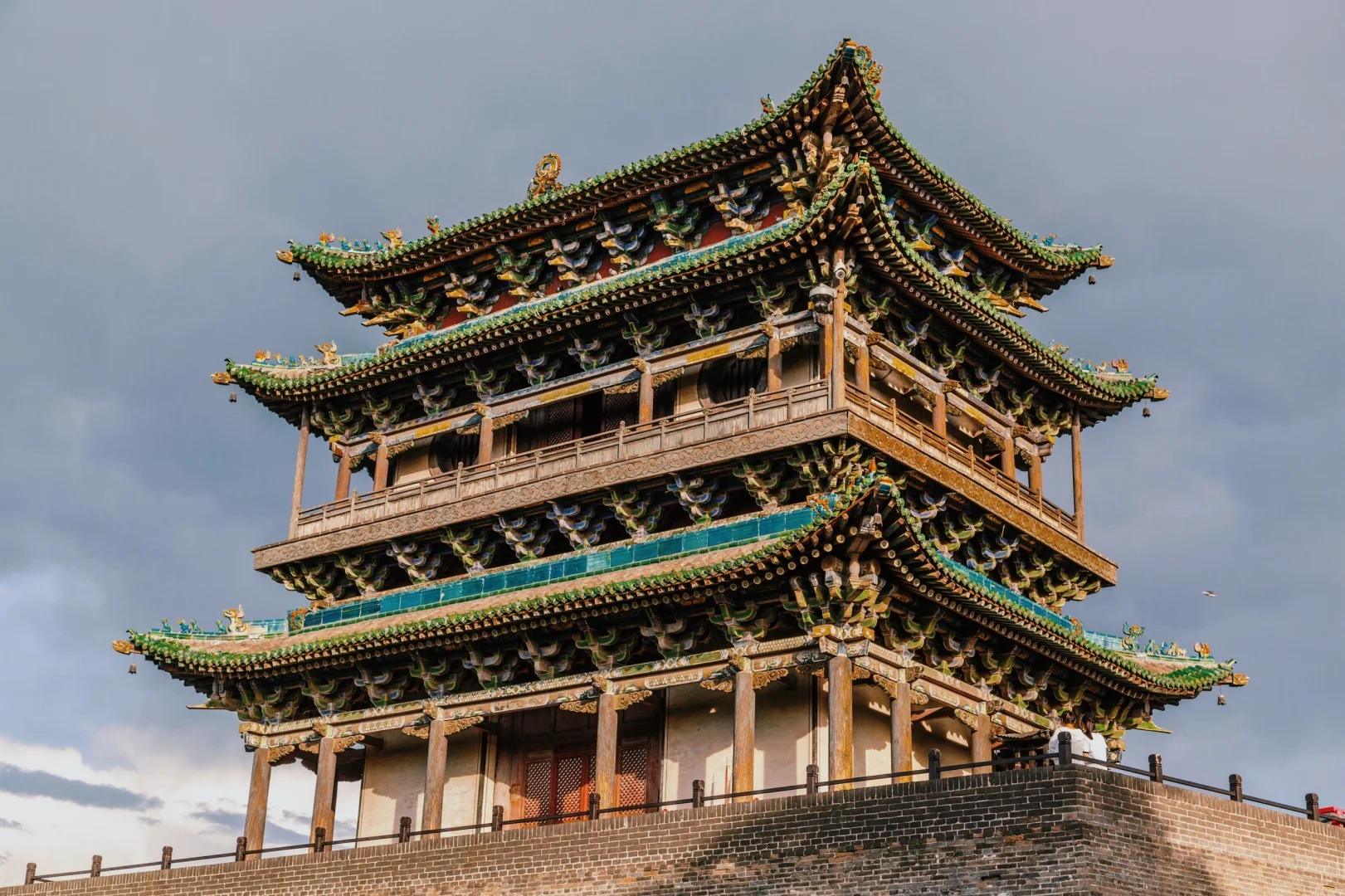
Photography Opportunities
- City Walls and Gates: The ancient city walls and gates of Pingyao offer some of the most iconic photography opportunities in the area. The massive grey brick walls, punctuated by watchtowers and gates, provide a dramatic backdrop for both wide-angle landscape shots and detailed architectural studies. Photographers can capture the grandeur of the walls from ground level or climb to the top for panoramic views of the city. The city gates, particularly when illuminated at night, offer striking compositions that showcase the blend of light and shadow on the ancient structures. Sunrise and sunset are particularly good times to photograph the walls, as the changing light creates dynamic shadows and warm hues on the weathered bricks.
- Traditional Street Scenes: The narrow, winding streets of Pingyao Ancient City are a photographer’s paradise, offering countless opportunities to capture the essence of traditional Chinese urban life. These streets, lined with grey-brick buildings adorned with red lanterns and wooden shop fronts, provide a perfect setting for street photography. Photographers can capture the daily activities of local residents, traditional craftsmen at work, or the bustling atmosphere of market areas. The interplay of light and shadow in these narrow alleys, especially during early morning or late afternoon, can create dramatic and moody images. Including people in these shots can add scale and bring the ancient streets to life.
- Courtyard Houses and Traditional Architecture: The well-preserved courtyard houses and other traditional buildings in Pingyao offer excellent subjects for architectural and interior photography. These structures, with their intricate wooden carvings, tiled roofs, and stone courtyards, provide opportunities for both wide-angle shots showcasing entire buildings and close-ups of architectural details. The play of light in the courtyards throughout the day creates ever-changing scenes, with shadows and highlights emphasizing different aspects of the architecture. Interior shots of these buildings can capture the essence of traditional Chinese living spaces, with their elegant furniture, decorative screens, and historical artifacts.
- Night Photography: Pingyao takes on a magical quality at night, offering unique photographic opportunities. The ancient city is beautifully illuminated after dark, with red lanterns lining the streets and warm lighting accentuating historical buildings. This creates a romantic and nostalgic atmosphere perfect for atmospheric night shots. Photographers can capture the contrast between the dimly lit streets and brightly illuminated landmarks, or experiment with long exposures to create light trails from passing vehicles or pedestrians. The reflections of lights on wet streets after rain can add an extra dimension to night photographs, creating striking images that capture the timeless beauty of this ancient city.
Modern Importance
- Cultural Heritage Preservation: Pingyao Ancient City serves as a model for cultural heritage preservation in China and globally. Its well-maintained Ming and Qing dynasty architecture and urban layout provide a tangible link to China’s past, offering valuable insights for historians, architects, and urban planners. The city’s preservation efforts demonstrate how historical sites can be maintained while accommodating modern needs, balancing conservation with sustainable development. This approach has made Pingyao a case study in heritage management, influencing preservation policies and practices across China and beyond. The city’s success in maintaining its historical integrity while adapting to tourism has set a benchmark for other ancient towns seeking to preserve their heritage.
- Tourism and Economic Impact: Pingyao has become a major driver of tourism in Shanxi Province, significantly contributing to the local and regional economy. The influx of domestic and international tourists has created numerous job opportunities in hospitality, retail, and service sectors. Many traditional buildings have been repurposed as hotels, restaurants, and shops, providing income for local residents while preserving historical structures. The city’s popularity has also spurred the revival of traditional crafts and cuisines, creating niche markets and supporting local artisans. This economic boost extends beyond Pingyao itself, benefiting surrounding areas and encouraging infrastructure development in the region. The city’s success as a tourist destination has become a model for other historical sites in China looking to leverage their cultural heritage for economic development.
- Educational Resource: Pingyao Ancient City serves as an invaluable educational resource, offering a living classroom for students, researchers, and visitors interested in Chinese history, architecture, and culture. The city’s well-preserved urban layout and buildings provide tangible examples of traditional Chinese urban planning, architectural styles, and daily life during the Ming and Qing dynasties. Museums within the city, such as those dedicated to traditional banking and commerce, offer insights into China’s economic history. Educational programs and guided tours cater to different age groups and interests, making history accessible and engaging. The city also hosts cultural events and workshops, promoting the understanding and continuation of traditional arts and crafts. As an UNESCO World Heritage site, Pingyao plays a crucial role in raising awareness about the importance of cultural heritage preservation on a global scale.
- Cultural Exchange and Artistic Inspiration: In the modern context, Pingyao has become a hub for cultural exchange and artistic inspiration. The annual Pingyao International Photography Festival, established in 2001, has transformed the city into a global platform for contemporary photography, attracting artists, curators, and photography enthusiasts from around the world. This event not only promotes cultural exchange but also creates a unique juxtaposition of modern art against the backdrop of ancient Chinese architecture. The city’s atmospheric streets and traditional buildings have also made it a popular location for film and television productions, further spreading awareness of Chinese cultural heritage through media. Artists, writers, and creatives often draw inspiration from Pingyao’s unique ambiance, contributing to a ongoing dialogue between traditional and contemporary Chinese culture. This blend of old and new reinforces Pingyao’s relevance in modern times, making it not just a relic of the past but a living, evolving cultural entity.
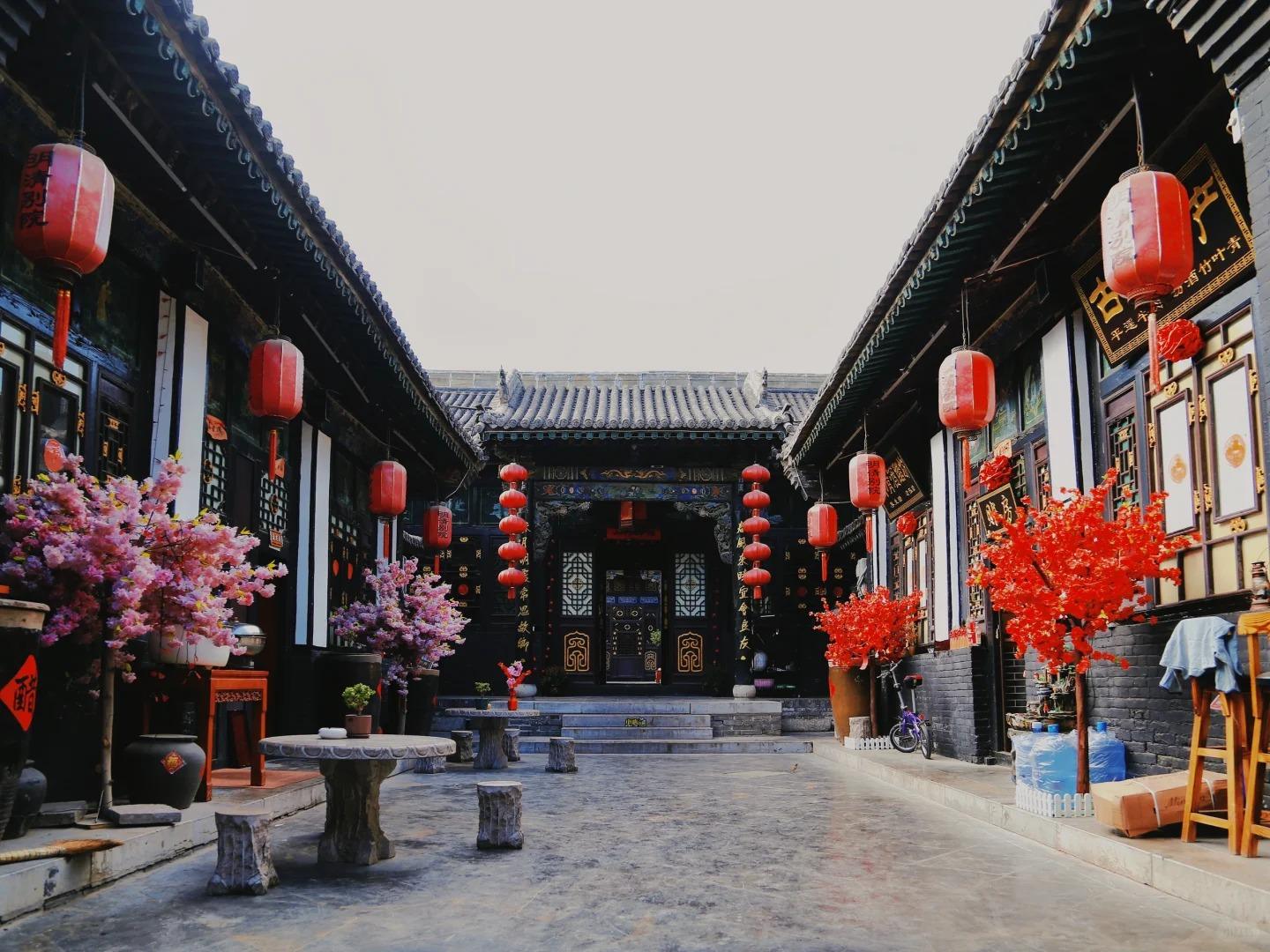
FAQ
- What is Pingyao Ancient City famous for?
Pingyao Ancient City is famous for its well-preserved Ming and Qing dynasty architecture, intact city walls, and its historical significance as China’s financial center during the 19th century. It’s also known for being a UNESCO World Heritage Site and hosting the annual Pingyao International Photography Festival. - What’s inside Pingyao Ancient City?
Inside Pingyao Ancient City, you’ll find:
1. Ancient city walls and gates
2. Traditional courtyard houses
3. Historical financial institutions like Rishengchang Exchange Shop
4. Ancient government buildings
5. Temples and religious sites
6. Museums showcasing local history and culture
7. Traditional shops and markets
8. Restaurants serving local cuisine
9. Guesthouses in renovated historical buildings - Is Pingyao Ancient City free?
No, Pingyao Ancient City is not free to enter. There is an entrance fee of CNY 165, which includes access to most attractions within the city. However, some individual sites within the city may have additional fees. - Is Pingyao Ancient City worth visiting?
Yes, Pingyao Ancient City is definitely worth visiting, especially for those interested in Chinese history, architecture, and culture. Its well-preserved ancient buildings, rich cultural heritage, and unique atmosphere offer a rare glimpse into China’s past. - What to do in Pingyao Ancient City?
In Pingyao Ancient City, you can:
1. Walk along the ancient city walls
2. Visit historical sites like Rishengchang Exchange Shop and Confucian Temple
3. Explore traditional courtyard houses
4. Try local Shanxi cuisine
5. Shop for traditional crafts and souvenirs
6. Stay in a renovated historical building
7. Participate in cultural workshops
8. Visit museums and art galleries
9. Attend the Pingyao International Photography Festival (if visiting in September)
10. Take photographs of the ancient architecture and street scenes - How do I get to Pingyao Ancient City in the local city?
To get to Pingyao Ancient City in Pingyao County, Shanxi Province:
1. By Train: Take a train to Pingyao Ancient City Station, then take a short taxi ride to the city entrance
2. By Bus: Take a bus from Taiyuan (the capital of Shanxi Province) or other nearby cities to Pingyao Bus Station
3. By Taxi or Private Car: Available from Pingyao train station, bus station, or nearby cities
4. By Plane: Fly to Taiyuan Wusu International Airport, then take a train or bus to Pingyao - How to visit Pingyao Ancient City?
To visit Pingyao Ancient City:
1. Purchase an entrance ticket at the city gate
2. Plan to spend at least one full day exploring, or stay overnight for a more immersive experience
3. Wear comfortable walking shoes as the streets are often uneven
4. Start early to avoid crowds, especially at popular sites
5. Consider hiring a local guide for in-depth historical information
6. Visit key attractions like the city walls, Rishengchang Exchange Shop, and traditional courtyard houses
7. Try local cuisine at traditional restaurants
8. Stay in a renovated historical building for a unique experience
9. Respect local customs and residents, as people still live and work in the city
10. Visit during the shoulder season (spring or fall) for comfortable weather and fewer crowds


